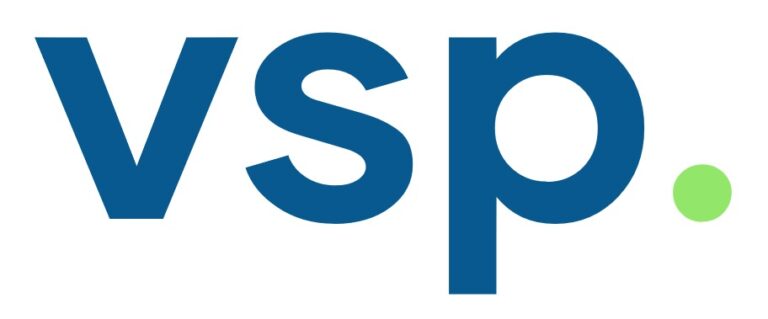Innovators Growth Platform (IGP): A New Pathway for High-Growth Companies in India to Access Public Markets

The Problem: Challenges Faced by New-Age Companies in Raising Capital
India is home to many high-growth, new-age companies, especially in sectors like AI, e-commerce, biotechnology, and fintech. These companies often experience rapid expansion and push the boundaries of technology and innovation. However, they face significant hurdles in raising capital, particularly through traditional financial avenues.
Some of the key challenges are:
- Profit-Driven Expectations: Traditional IPO markets and investors typically look for companies with predictable profits and a steady financial history. New-age companies, however, prioritize growth over immediate profitability, reinvesting earnings to scale their business and innovate. This disconnect can make it challenging to secure financing.
- Limited Access to Retail and Smaller Investors: Young companies often cannot reach a broader pool of retail and smaller institutional investors directly, limiting the scale of their fundraising efforts compared to well-established firms with a stable profit record.
- Absence of a Specialized Platform for High-Growth Ventures: Traditional stock exchanges are designed for mature companies, which may not be ideal for high-growth startups focusing on future potential. New-age companies require a platform that emphasizes innovation, growth, and a forward-looking vision rather than current profitability.
These hurdles frequently lead startups to rely on venture capital or private equity, which may not always align with their long-term vision. Addressing these issues, the Bombay Stock Exchange (BSE) and National Stock Exchange (NSE) introduced the Innovators Growth Platform (IGP), a dedicated solution tailored for high-growth firms needing access to public funding.
Solution: The Innovators Growth Platform (IGP)
The Innovators Growth Platform (IGP) offers new-age, high-growth companies in India an alternative route to access public markets. Unlike traditional IPOs, which often require a solid profit record, the IGP recognizes the unique needs of startups focusing on growth. It allows these companies to showcase their potential to investors who understand the risks and rewards of high-growth industries.
Comparison with SME IPOs
While discussing alternative pathways to raise funds, it’s essential to differentiate between IGP listings and SME IPOs (Small and Medium Enterprise Initial Public Offerings):
- SME IPOs are designed specifically for small and medium-sized enterprises (SMEs) with more traditional growth models, providing a route for these companies to raise capital from retail investors who prioritize stability.
- IGP Listings cater to high-growth startups, especially in tech-driven sectors, looking to raise significant funds to scale their operations. The IGP appeals to institutional investors, venture capitalists, and accredited investors who are familiar with the high-growth, high-risk nature of these businesses.
Key Features and Requirements of the Innovators Growth Platform (IGP)
The IGP includes several technical requirements that enable high-growth companies to access capital markets while ensuring investor protection. Here are the main technical elements:
- Eligibility Criteria for Companies:
- Companies seeking listing on the IGP must primarily operate in high-growth, innovation-driven sectors, such as artificial intelligence, biotechnology, fintech, or advanced tech industries.
- At least 25% of the pre-IPO equity shares must be held by Qualified Institutional Buyers (QIBs) or accredited investors (such as venture capital firms or angel investors) for a minimum of two years prior to the listing. This ensures that credible investors have validated the company’s potential.
- Listing Requirements:
- IPO vs. Direct Listing: Companies listing on the IGP have the option to raise funds through an Initial Public Offering (IPO) or to list without conducting an IPO. If they opt for an IPO, they must raise a minimum of ₹10 crore from the public.
- Minimum Public Shareholding: At least 25% of the company’s shares must be held by the public post-listing to meet the regulatory requirements of a public company.
- No Mandatory Profitability Track Record: The IGP doesn’t require a profitability track record, making it feasible for high-growth startups to list without a mature balance sheet.
- Investor Access and Restrictions:
- To protect investors, the IGP restricts retail investor participation and primarily targets Qualified Institutional Buyers and accredited investors familiar with the high-risk, high-reward nature of startups.
- This structure provides growth-oriented companies with access to a select group of knowledgeable investors who understand the unique business models and potential volatility of early-stage companies.
- Migration to the Main Board:
- Companies listed on the IGP can transition to the main exchange board after a minimum of one year if they meet certain conditions, such as having at least 200 public shareholders and meeting other prescribed criteria.
- This feature allows IGP-listed companies to reach a larger investor base over time as they stabilize and grow, facilitating further capital access.
These technical features make the IGP a practical and accessible alternative for high-growth companies that don’t fit the mold of traditional IPO eligibility.
Benefits of Listing on the IGP
Listing on the IGP provides high-growth companies with several advantages that align with their unique growth objectives:
- Broader Investor Base: The IGP connects companies with a pool of investors, such as institutional investors, family offices, and accredited individuals, who understand the potential and risks of high-growth sectors.
- Example: A healthcare AI startup could attract international investors focused on healthcare innovation, using the funds raised to expand R&D and launch new products.
- Enhanced Credibility and Brand Image: A public listing on the IGP boosts a company’s reputation, making it more credible and attractive to partners, customers, and employees. The increased visibility is invaluable for building brand recognition and attracting strategic alliances.
- Example: A renewable energy startup listed on the IGP could draw the attention of industry leaders, leading to partnerships or large sales contracts.
- Reduced Regulatory Burden: Compared to traditional IPOs, the IGP imposes fewer regulatory requirements, which is ideal for growth-focused companies. This flexibility allows high-growth startups to list and raise capital without the immediate pressure of profitability.
- Example: A data analytics company reinvesting profits to drive growth can list on the IGP without facing profitability-based restrictions.
- Liquidity for Existing Stakeholders: By listing on the IGP, early investors and employees can sell shares, providing them with liquidity and realizing the value of their investments.
- Example: Employees at a tech startup that has grown substantially in value can monetize their shares on the IGP, allowing them to benefit from the company’s growth.
Drawbacks of Listing on the IGP
Despite its advantages, listing on the IGP also presents some challenges:
- Limited Retail Investor Access: The IGP is only open to accredited investors, which excludes most retail investors. This restriction can limit trading volume and liquidity, potentially impacting share price stability.
- Example: A retail investor keen on investing in a promising e-commerce platform listed on the IGP may not meet the platform’s investor criteria.
- Compliance Requirements: While more flexible than the main exchanges, the IGP still requires companies to meet certain regulatory standards, including having a two-year shareholder base among accredited investors. This can be difficult for very early-stage companies.
- Example: A recently founded tech firm relying on friends and family funding may struggle to fulfill the IGP’s criteria.
- Stock Price Volatility: High-growth companies often experience fluctuations in their share prices, especially when revenues are still uncertain. This volatility may deter risk-averse investors.
- Example: A biotech startup’s stock may experience wide price swings due to product development challenges, affecting investor sentiment.
The Bigger Picture: How the IGP Supports Indian Capital Markets
By providing a tailored platform for high-growth, innovation-driven companies, the Innovators Growth Platform fills a crucial gap in India’s capital markets. While SME IPOs cater to more traditional small businesses, the IGP is better suited to startups in tech-heavy fields such as fintech, biotech, and AI, allowing them to attract investment based on future potential rather than historical profits.
The IGP promotes a more inclusive, dynamic capital market, supporting companies focused on growth and innovation. For investors, the platform offers a chance to engage with India’s most promising companies, fostering an environment where both stability and progress can thrive.
Conclusion
The IGP represents a vital step forward for India’s burgeoning startup ecosystem. By bridging the gap between private investment and traditional public listings, the platform gives high-growth companies the support they need to flourish, while offering investors access to the cutting edge of Indian industry. As the IGP grows, it is likely to become a cornerstone of India’s capital markets, supporting the next generation of leading companies and contributing to economic growth.



